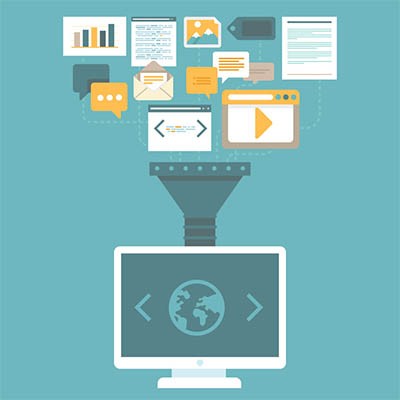
Competition is either a driving force or a crushing detriment for small businesses. Consequently, marketing has become more important than ever before as well, but this marketing content needs to be managed in some way. This week’s tech term focuses on content management systems (CMS), and how they can help your business more easily manage its content.
Defining a CMS
A CMS application stores your content and makes it easy to change it or share it with others. These types of solutions often have integration with third-party programs and applications so that the content can provide as much value as possible. In essence, it’s the central location of access for your business’ content, allowing for the ability to build, change, or store the content. Depending on the application, you’ll have a specific strategy in mind when it’s implemented. Two of the most popular CMS strategies out there rely on the following goals:
- Web content management
- Enterprise content management
Here are some strategies that you’ll want to consider for your content, as well as how to choose a CMS for that purpose.
Web-Based Content Management System (WCMS)
More often than not, a business works with a website creator to put their public face together. These creators often use a WCMS to create and manage the website’s content. Furthermore, since a website can be considered the central hub for a business’ digital marketing strategy, it makes sense that you would want a way to organize this information in an easy-to-consume and easy-to-find environment. A WCMS provides those who don’t typically have advanced training in programming languages or website management with options to managed and create content they can share and use to their organization’s benefit.
Marketing has become more and more of a day-by-day process, and organizations have found that the ability to make changes to their websites as need is an invaluable prospect. A web-based CMS gives organizations the ability to quickly create new pages, edit the content, and publish them as needed, as well as provide the opportunity to integrate with forms, forums, and social media to provide a great customer experience as a whole.
Some titles include: WordPress, Joomla, and Drupal.
Enterprise Content Management System
Though the premise is largely the same, enterprise content management is a bit different. It’s essentially a way to manage your content in an online environment that your employees will all have access to. The numerous functions that an ECMS provides include:
- Improving security by managing access to organizational content.
- Making files easy to access and searchable, boosting an organization’s collaboration capabilities.
- Centralizing all organizational content.
- Incorporating a document management system (DMS) to further build a digital content storage platform.
- Creating and storing templates to improve workflow efficiency.
Maintaining access to information is one of the best ways that your organization can remain competitive. Likewise, you need control over this information to ensure maximum value from your investment. What it comes down to is basically a management of data, so the easier you make this process for yourself, the more time you can spend on making sure your business remains profitable.
Some titles include: HP Distributed Workflow, IBM ECM, Oracle WebCenter Content.
Catharsis Managed IT Ltd can help your business figure out the best software for your needs. To learn more, reach out to us at (416) 865-3376.
